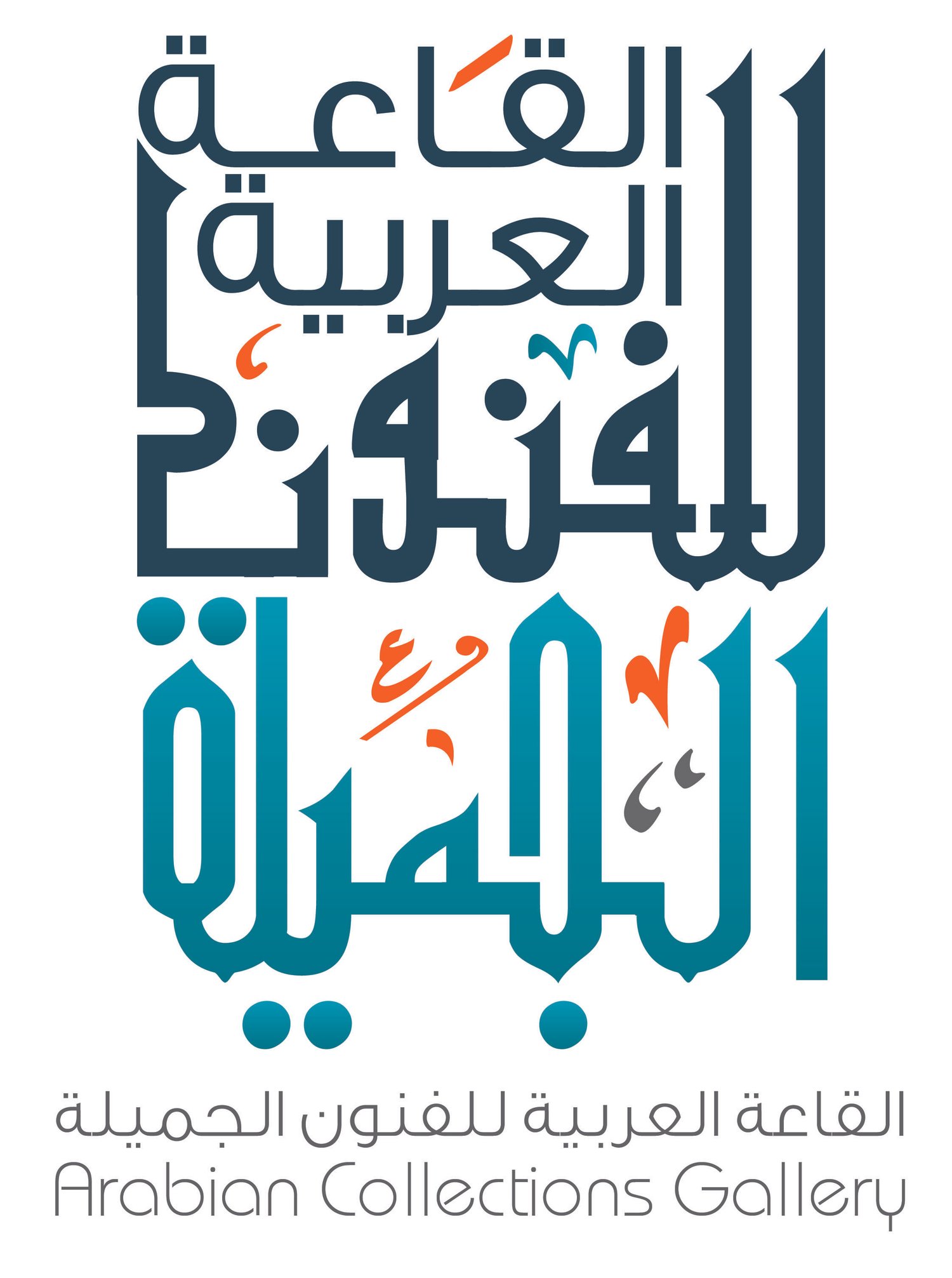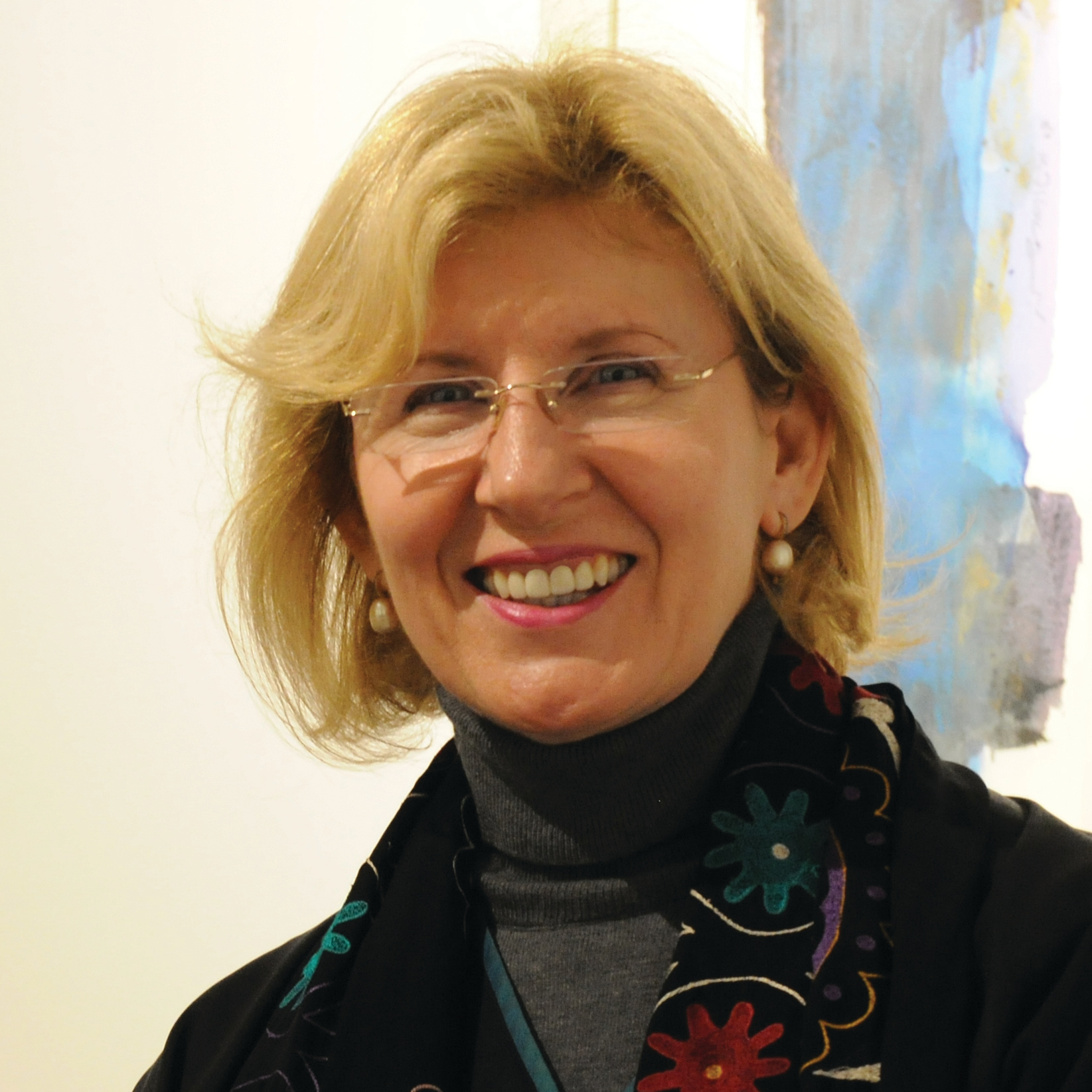Artists
Helen Al-Ammari
Helen Al-Ammari is a Saudi artist, born in the UK who has lived in Dhahran with her family for 30 years.
She has owned and operated Arabian Collections Gallery for 24 of those years and is an active supporter of Saudi Arabian arts and artists.
Helen’s formal art education was with City & Guilds of London where she specialised in oil painting and creative design and has continued on her path of lifelong learning by taking courses and workshops whenever she can.
The richness inherent in oils always appealed greatly, however she has moved in many different artistic directions since then.
Better known for her abstract mixed media works and printmaking, she is now excited to share her new passion for surface pattern design and in this collection she has worked digitally with her hand drawn sketches and paintings in Adobe Photoshop and Illustrator to produce colourful and whimsical, digital images and patterns.
Hassan Massoudy
Considered by some to be the “greatest living calligrapher,” Massoudy was born in 1944 in Najef, southern Iraq, into a traditional Iraqi society. He moved to Baghdad in 1961, where he learnt the various classical styles of calligraphy and studied graphic design and fine arts. His desire to study art, coupled with the political events in Iraq at the time, saw him leave for Paris in 1969 where he enrolled at the École des Beaux- Arts.
Massoudy was not only influenced by the great Arabic masters but also the artists Leger, Matisse, Soulages and Picasso. After receiving his degree in 1975 he returned to calligraphy in a more enriched way, employing classical styles in a newer and freer manner. From 1972, he toured Europe for thirteen years with his Arabesque performance combining music, poetry and calligraphy. Peace and tolerance are central themes of his work, leading him to work with Amnesty International, UNICEF and other related organisations. Massoudy’s artwork was exhibited and used as the primary promotional image for the British Museum’s 2006 exhibition, Word Into Art: Artists of the Modern Middle East.
Massoudy is certainly one of the foremost contemporary Arab artists who has succeeded in conquering his ego or nafs, as it is known in the sufi tradition. With his large vertical strokes and sparse horizontal lines, he alternates between the spiritual and temporal, the perpetual and ephemeral, painting and writing as if in a trance, without the least care for the material outcome of his creativity; in this lies his brilliance. Furthermore, he has authored more than 17 books on his calligraphy and there are 3 books written about him.
Rubina Malik
Rubina Malik is a seasoned and much sought after ceramic and glass artist who has developed her craft over many years. Her passion for pottery runs deep and the way she expertly manipulates clay, glass and fire, characterises her work.
Her pieces encompass a wide range of thrown, sculpted and fusion designs with a unique lustrous finish that define her own signature style.
This fusion of firing techniques such as Raku, pit firing, Saggar, Kosai fumed lusterware, photo-lithography and horsehair Raku finish the artwork with striking results, especially when as a fused glass artist too, she may combine clay and glass together in one art piece.
Mohammed Farea
Mohammed Farea is a Riyadh-based artist and architect whose paintings depict stylised buildings reminiscent of traditional architecture in the Najd region of Saudi Arabia. The self-taught artist uses shapes and vibrant colours to capture the mud, stone and palms which are commonplace in the Najd, the highlands located in the centre of the Arabian Peninsula.
Farea, born in 1968, examines how traditional architecture acts as an important facet in shaping cultural identity. The monuments of traditional Saudi architecture should be preserved and valued, according to Farea. "I’m trying to find a way of combining new construction models with traditional learning," he says to describe his work, which strives to demonstrate the essence and ambiance of building structures, the life that circulates around them and their significance as monuments of cultural history. Farea uses circles extensively because, in his view, everything vital in our existence is related to the movement of the circle.
A member of the Riyadh Fine Art Group, Farea was trained as an architect and works for an architecture firm in the Saudi capital.
Spencer Tart
Internationally known watercolour artist, Spencer Tart was born in Chesterfield, England. He qualified as an architect and worked for many years in Canada and the USA before returning to Bath, England where he now lives.
In 1980 Spencer was invited to work as an architect on a conservation study of the historic city of Old Jeddah in Saudi Arabia. This was his introduction to the Middle East, which has remained the main subject matter of his work. Whilst sketching and painting was always a small part of his work as an architect, this quickly became more serious and interest in his watercolour paintings grew quickly during the 1980’s.
His continued exploration has taken him to many different regions across the Middle East, where the different architectural styles and spectacular geographical features have provided constant inspiration. His work has become a valuable record of the architectural heritage of Saudi Arabia, the U.A.E. and the Oman.
Many of the Souks, landscapes and street scenes in Bahrain, Dubai, Riyadh, Jeddah and Muscat have proved to be very sought after with both the local and expatriate communities. His style of watercolour continues to be admired wherever he exhibits, and his pictures feature in many private collections of discerning buyers around the world.
His work is exhibited in selected galleries across the Middle East on a continuous basis.
Abdullah Essa
Abdullah Essa is a highly versatile artist hailing from Khobar, Saudi Arabia. With an extensive background in various genres and techniques, Abdullah's artistic prowess knows no bounds. Having spent over a decade in the USA, he brings a unique blend of cultural influences into his work. Abdullah's artistic style is characterized by its boundless nature, encompassing neo-expressionism, abstract art, collage, and much more. His ability to seamlessly blend techniques and genres allows him to create captivating and thought-provoking pieces that resonate with viewers on a deep and personal level. Through his art, Abdullah aims to challenge conventional boundaries and explore the limitless possibilities of artistic expression.
"Art is the boundless playground where creativity dances with infinite possibilities. It is my voice, my sanctuary, and my rebellion against the ordinary. Through my work, I challenge conventional boundaries, exploring the uncharted territories of expression. Art is the language that transcends cultural barriers, inviting us to embrace diversity and celebrate the beauty of our shared humanity. In every stroke, every color, and every form, I strive to ignite a spark of inspiration and ignite the imagination of those who encounter my art." - Abdullah Essa







